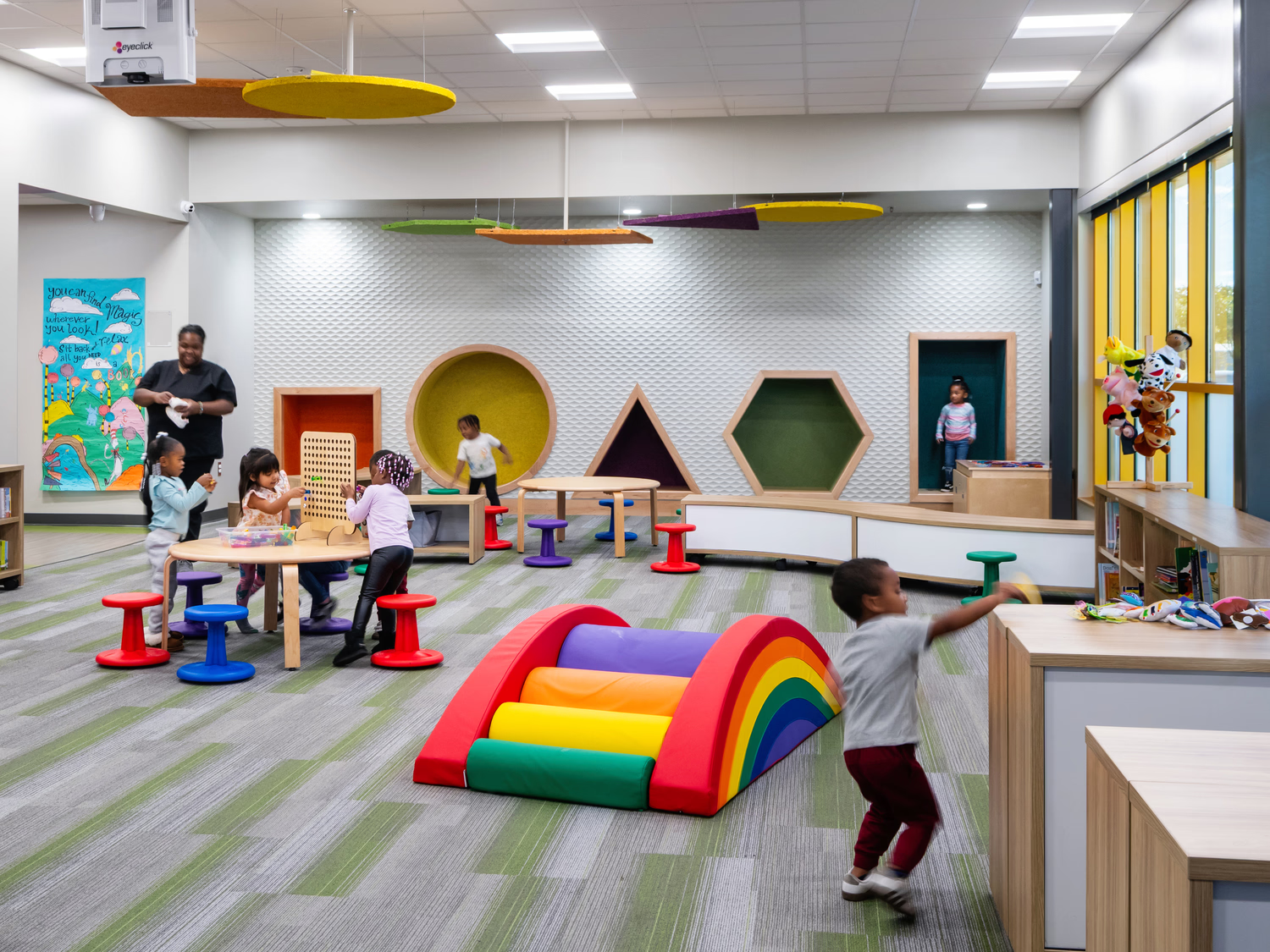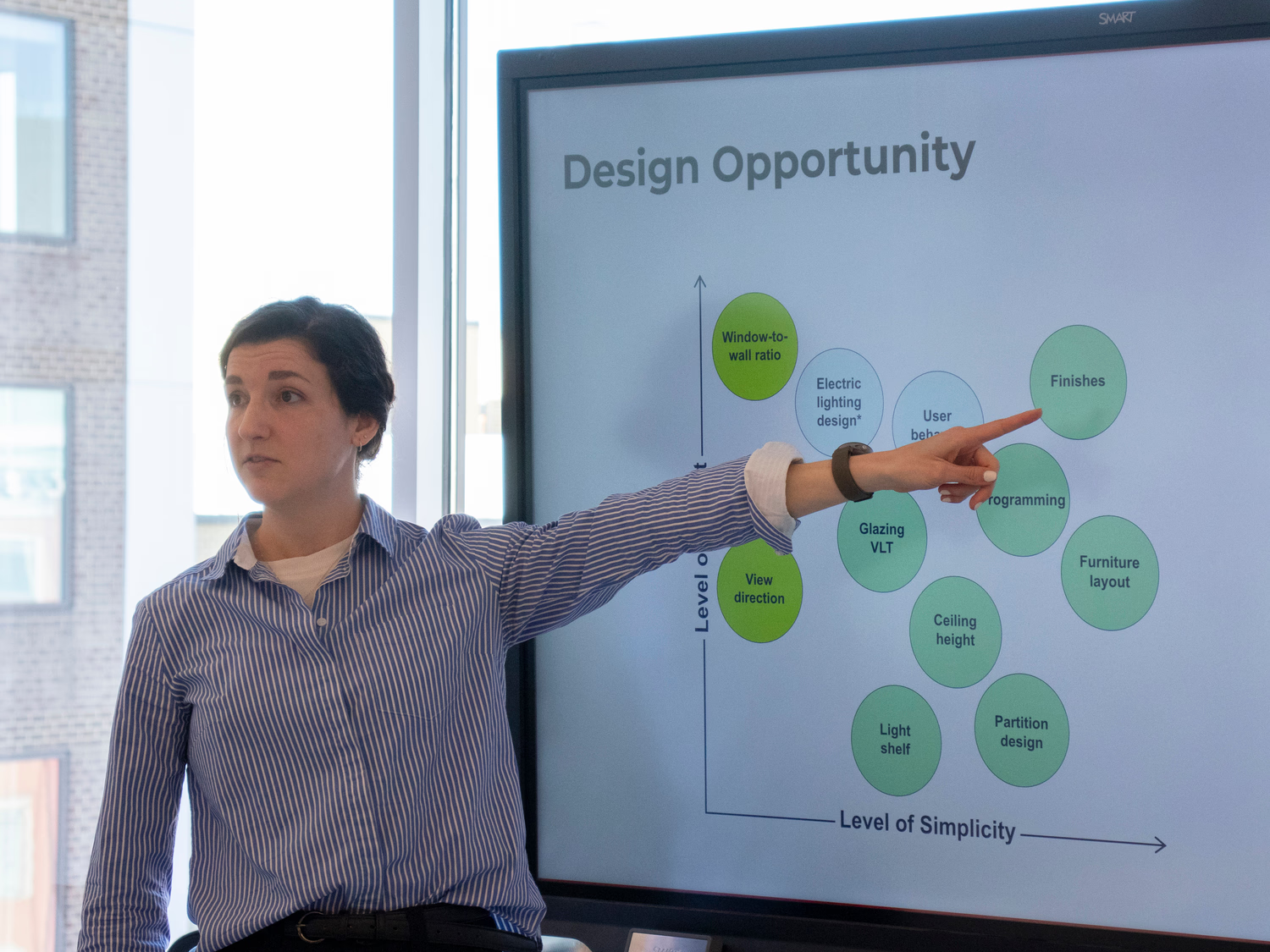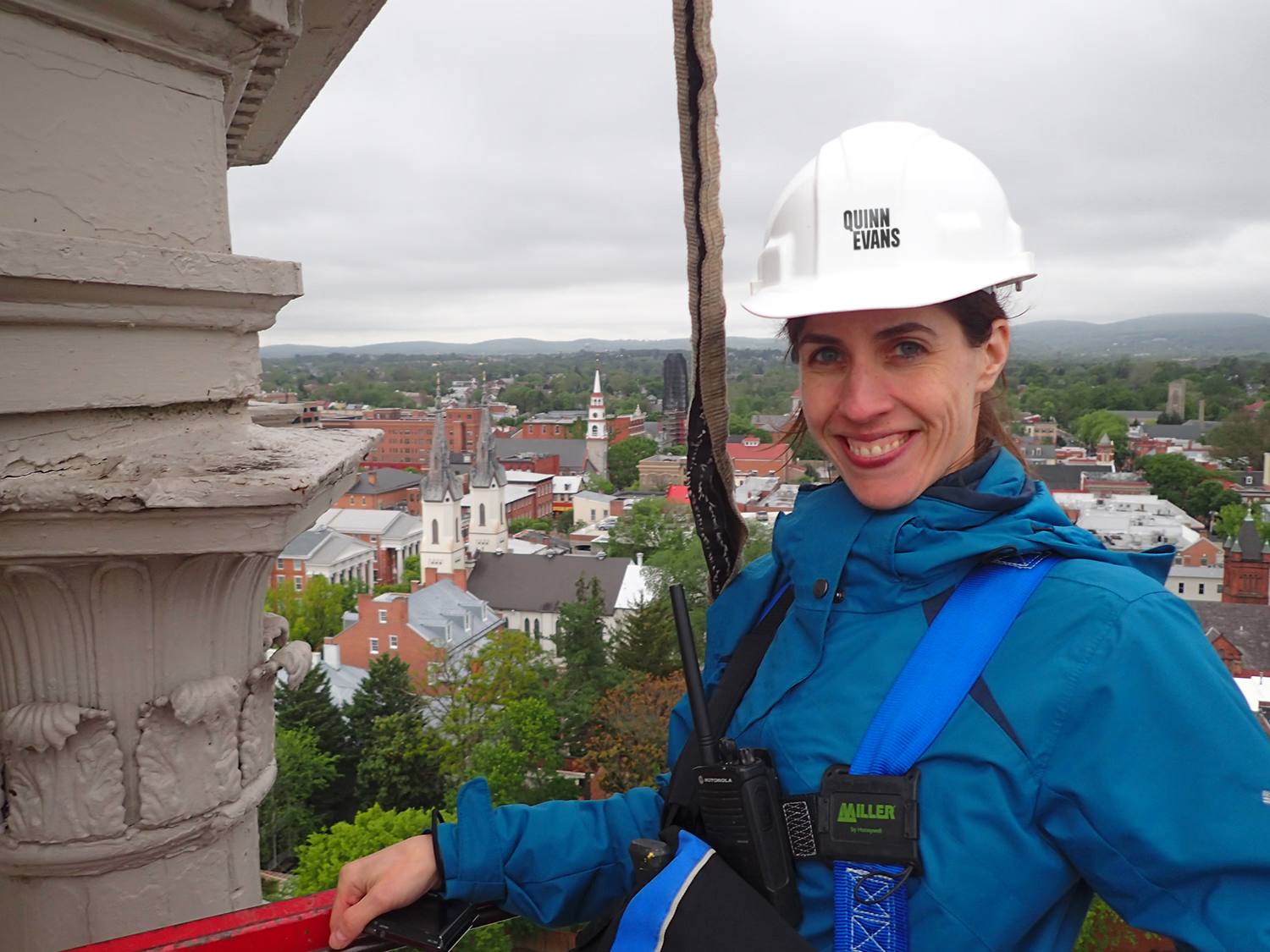Leora Mirvish, principal with Quinn Evans, recently presented “Artifact Protection in Daylit Spaces: An Analytic Approach” at the 2022 Building Museums Symposium hosted by the Mid-Atlantic Association of Museums in Washington, DC. Mirvish, along with Michael Henry, Smithsonian’s Design Manager, and Gary Woodall of Gary Steffy Lighting Design, focused on the daylighting strategies employed in the ongoing renovations for Smithsonian’s National Air and Space Museum (NASM). Mirvish has served as Project Manager and Lead Designer for the interior portion of this massive project.

Many museum buildings, large and small, both modern era and older historic museums, feature architecturally interesting spaces filled with daylight. From the standpoint of protecting precious artifacts, however, such spaces can be a conservator’s nightmare. The most iconic spaces in Smithsonian’s NASM are the skylit atrium galleries where planes and spacecraft are displayed against the backdrop of their natural environment—the sky. While these may be among the most memorable spaces in the building, a significant curatorial challenge is how to protect the artifacts from the light that pours in through the massive skylights and window walls.

In developing the design for the renovation of NASM, one of the most significant challenges was how to preserve the character of these iconic spaces while reducing daylight to acceptable levels. A range of options for glazing and shading devices is available and was explored. New predictive analytic computer modeling tools allowed QE’s design team and conservators to evaluate any number of daylight treatment options by looking at light levels in specific locations over the course of the day and year. These tools can help designers develop shading solutions and help curators strategically place artifacts in three-dimensional spaces. The presentation included lessons learned from this major project (both from the design process and the actual as-built conditions) that can be applied to smaller-scaled museums.
Specific topics covered included:
- How the concepts of maximum light level vs. cumulative light exposure can be applied to the conservation of artifacts
- Modeling tools currently available for daylight analyses
- The range of glazing and shading systems that can be employed to control daylight levels

Construction began in 2019 and is currently anticipated to be completed in 2025. With the project currently about half-way through construction, the presentation also included images and results from the first of the three atriums to have been constructed.
The final design solution combined tinted and fritted glazing with both static light baffles and motorized horizontal roller shades. This approach preserves the historical design intent to be able to see aircraft against the sky, while controlling both direct sunlight and overall lighting levels. In the pre-renovation condition, dark bronze-tinted skylights contrasted with the lighter colored curtain wall to give the atriums a dark gloomy feeling, while also creating glare and excessive light levels from direct sunlight.

In the renovated space, the combination of the color of the tinted glass, the graduated frit pattern and the shading devices has resulted in the new atriums having a much brighter and more evenly lit feeling yet far lower actual measured light levels than the pre-renovation conditions, providing an environment within the conservator’s required parameters for protecting the artifacts. In addition, the analytic tools used in the design process provided critical guidance for the specific placement of the artifacts within these spaces, in some cases leading conservators and curators to conclude that certain objects would be better placed in the fully enclosed galleries instead.







